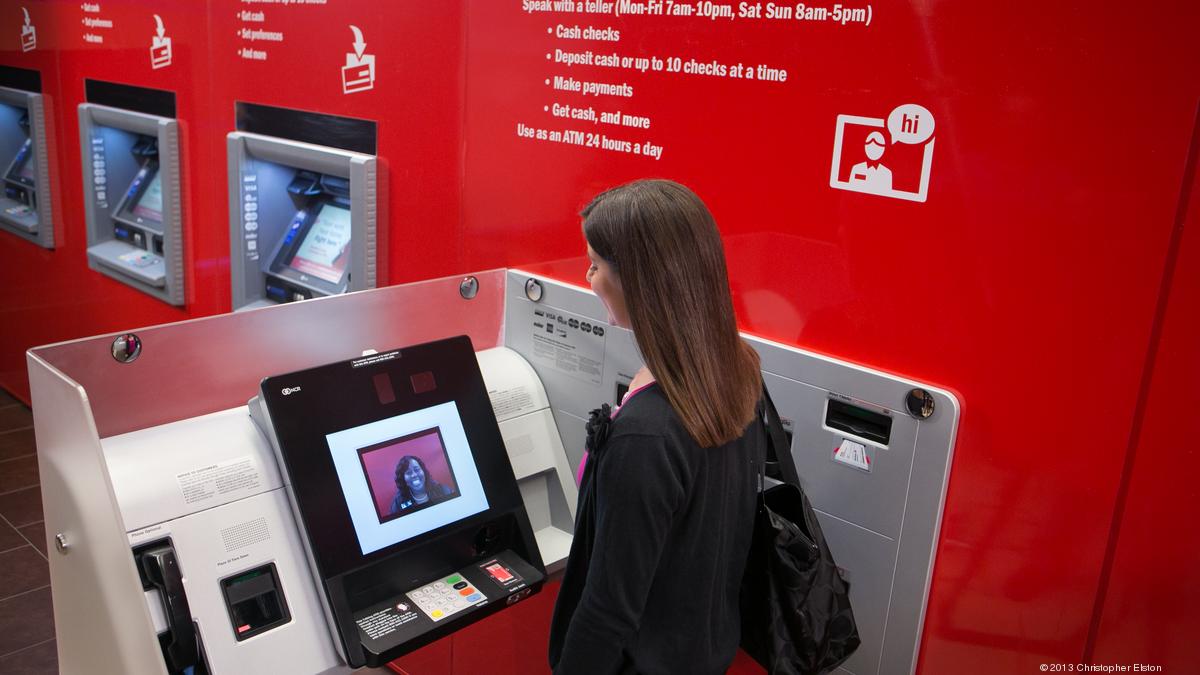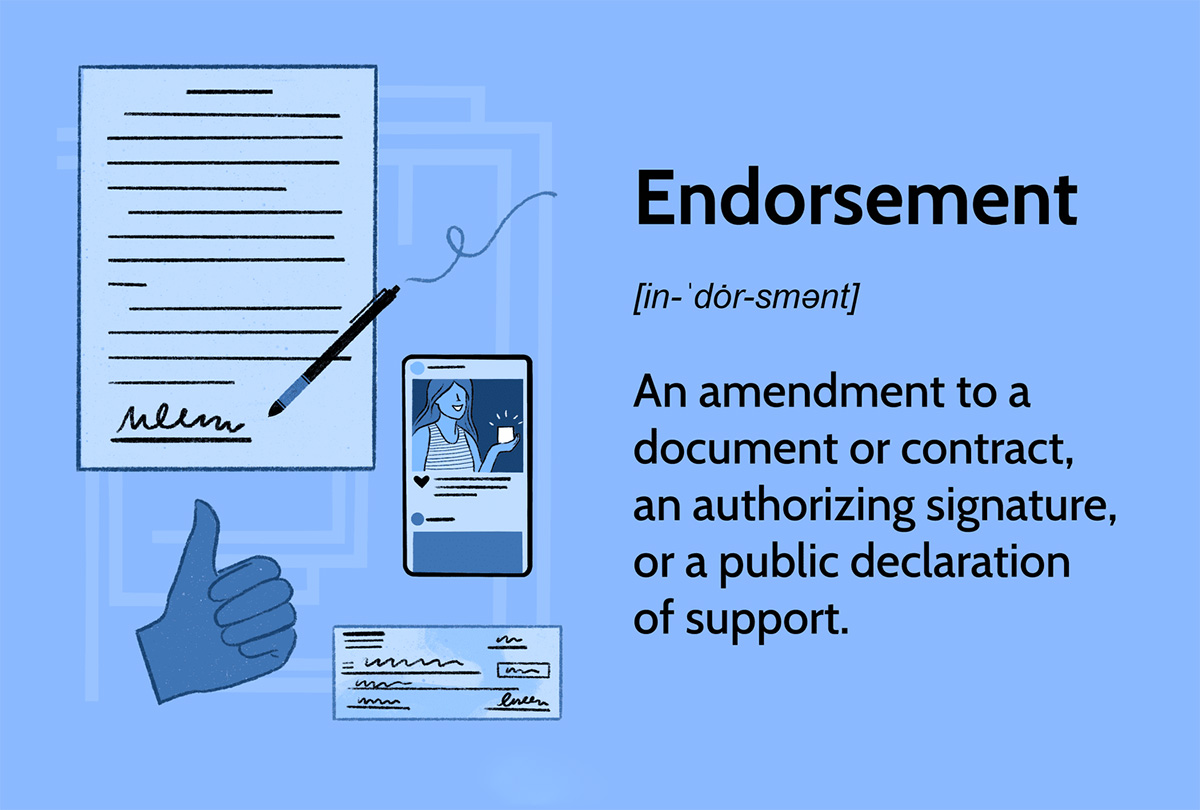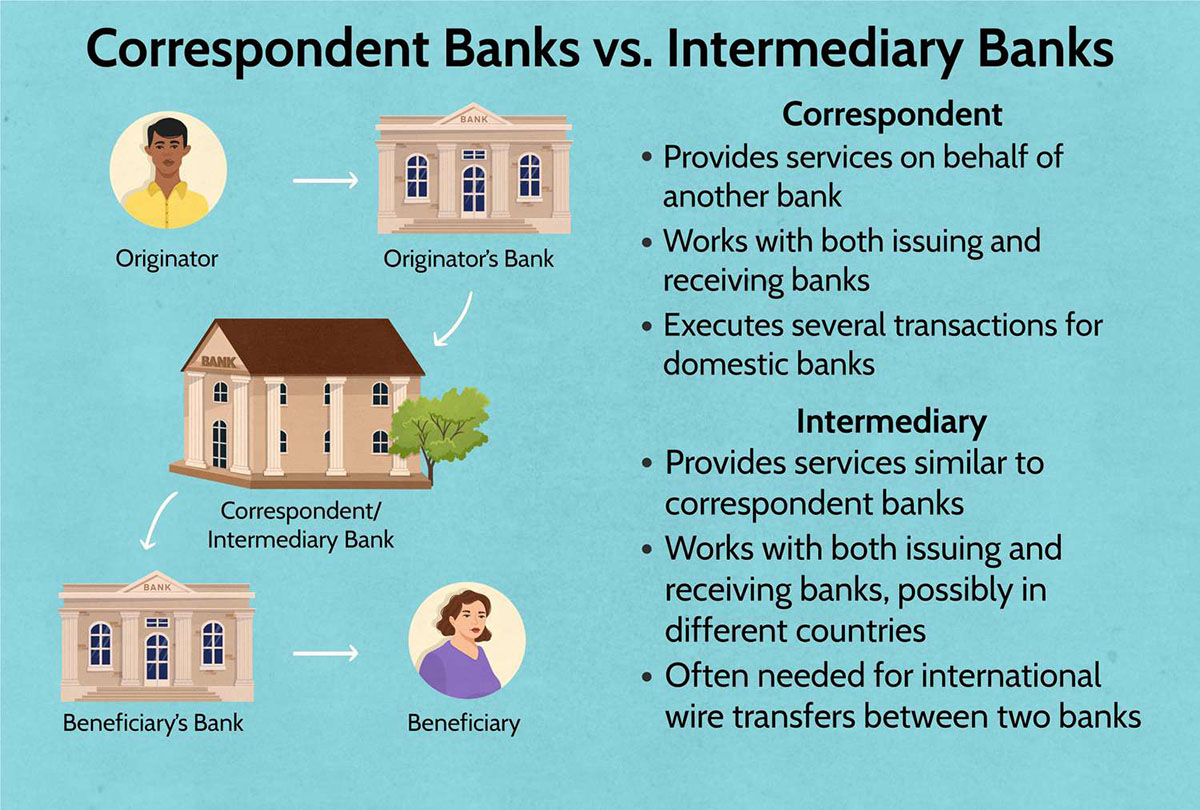

Finance
What Is Mandate In Banking
Published: October 11, 2023
Learn what mandate in banking means and how it relates to finance. Explore the significance of mandates in banking transactions and financial management.
(Many of the links in this article redirect to a specific reviewed product. Your purchase of these products through affiliate links helps to generate commission for LiveWell, at no extra cost. Learn more)
Table of Contents
Introduction
When it comes to the world of banking, there are various terms and concepts that may seem unfamiliar to the average person. One such term is “mandate.” In the context of banking, a mandate refers to an authorization given by an individual or entity to a bank to carry out certain financial transactions on their behalf. It empowers the bank to act as a representative, making financial decisions and executing transactions in accordance with the mandate holder’s instructions.
A banking mandate is a powerful tool that allows individuals, businesses, and organizations to delegate financial responsibilities to a trusted bank, thereby streamlining and facilitating their financial operations. It enables the mandate holder to save time and effort by allowing the bank to handle various financial tasks and transactions on their behalf.
It is important to note that a banking mandate is not the same as a power of attorney. While they share some similarities in terms of granting authority, a power of attorney typically has a broader scope and extends beyond financial matters. A banking mandate, on the other hand, specifically pertains to banking and financial transactions.
In the following sections, we will delve further into the definition of a banking mandate, explore the different types of mandates, discuss the benefits they offer, examine the responsibilities of both the bank and the mandate holder, highlight the limitations and risks associated with mandates, and conclude with a step-by-step guide on how to set up a mandate in banking.
Definition of Mandate in Banking
In the world of banking, a mandate refers to the written authorization given by an individual or entity, known as the mandate holder, to a bank. This authorization empowers the bank to carry out specific financial transactions on behalf of the mandate holder. It establishes a legal relationship between the two parties, outlining the scope of the bank’s authority and the responsibilities of the mandate holder.
A banking mandate is a valuable instrument that allows the mandate holder to delegate financial tasks and responsibilities to the bank, providing convenience and efficiency in their financial dealings. It enables the mandate holder to authorize the bank to perform various actions, such as making payments, initiating transfers, managing investments, and handling other financial transactions as specified in the mandate.
Typically, a banking mandate includes specific details such as the account number, the types of transactions authorized, any limitations or restrictions on the bank’s authority, and the duration of the mandate. The mandate holder may also specify additional instructions, preferences, or conditions that must be followed by the bank.
The mandate may be temporary, allowing the bank to act on behalf of the mandate holder for a specific period or a particular transaction. It can also be a standing mandate, which remains in effect until it is revoked or expired. Additionally, the mandate can be either general, giving the bank broad authority to handle various financial matters, or specific, granting limited authority for a particular purpose.
Furthermore, a banking mandate can be granted to a single bank or multiple banks, depending on the mandate holder’s preferences and needs. It provides flexibility for the mandate holder to choose the bank or banks that best meet their requirements and align with their financial goals.
It is important to note that a banking mandate is a voluntary arrangement between the mandate holder and the bank. Both parties must agree to the terms and conditions outlined in the mandate before it becomes valid and enforceable. The bank has a legal obligation to act in accordance with the instructions provided in the mandate, while the mandate holder retains the right to amend or revoke the mandate at any time.
Types of Banking Mandates
Banking mandates can vary in their scope and purpose depending on the specific financial needs and preferences of the mandate holder. Here, we will explore some common types of banking mandates:
- Payment Mandate: This type of mandate allows the bank to make payments on behalf of the mandate holder. It may include regular bill payments, loan repayments, utility payments, and other financial transactions that require periodic payments. The payment mandate simplifies the process of managing financial obligations, ensuring timely payments and reducing the burden on the mandate holder.
- Investment Mandate: An investment mandate authorizes the bank to manage and make investment decisions on behalf of the mandate holder. The bank acts as a portfolio manager, handling the buying and selling of various financial instruments such as stocks, bonds, mutual funds, and other investment assets. The investment mandate is particularly useful for individuals or organizations who may not have the time, expertise, or interest in actively managing their investments.
- Debit Mandate: A debit mandate grants the bank the authority to debit funds from the mandate holder’s account for specific purposes. This could include the automatic deduction of loan repayments, subscription fees, monthly dues, or other recurring expenses. The debit mandate ensures the timely and hassle-free collection of payments, eliminating the need for manual transfers or payments by the mandate holder.
- Third-Party Mandate: In some cases, a mandate holder may grant a third party, such as a family member, friend, or business associate, the authority to act on their behalf in banking matters. This third-party mandate allows the designated individual to operate the mandate holder’s bank accounts, make financial transactions, and manage funds as authorized in the mandate. It is important to establish a high level of trust and ensure clear communication when granting a third-party mandate.
- Trade Mandate: A trade mandate enables the bank to execute trading activities, such as buying or selling securities, commodities, or foreign currencies, on behalf of the mandate holder. This type of mandate is commonly used by businesses or individuals involved in international trade or investment activities. It allows the bank to handle the complexities and logistics of executing trades efficiently.
These are just a few examples of the types of banking mandates in existence. The specific type of mandate chosen will depend on the individual’s or organization’s unique financial goals, preferences, and requirements.
It is important to carefully consider the implications and limitations of each type of mandate before entering into an agreement with the bank. Seeking advice from financial professionals or legal experts can help ensure that the chosen mandate aligns with the mandate holder’s objectives and offers the desired level of control and convenience.
Benefits of Mandates in Banking
Banking mandates offer numerous benefits to both individuals and businesses, making them a valuable tool for efficient financial management. Here are some of the key advantages of using mandates in banking:
- Convenience: One of the primary benefits of banking mandates is the convenience they provide. By granting a mandate to a trusted bank, individuals and businesses can delegate various financial tasks and transactions to the bank. This saves time and effort by allowing the bank to handle routine processes such as payments, transfers, and investment decisions on behalf of the mandate holder.
- Expertise: Banks have a wealth of financial expertise and resources at their disposal. By utilizing a banking mandate, mandate holders can tap into the knowledge and experience of banking professionals. This can be particularly advantageous for individuals or businesses that may not have the time or expertise to efficiently handle complex financial transactions.
- Efficiency: With a banking mandate in place, financial transactions can be executed swiftly and accurately. Banks have advanced systems and processes in place, ensuring that payments, transfers, and investments are processed efficiently. This reduces the risk of errors or delays that may occur when handling financial matters manually.
- Control: Despite delegating certain financial responsibilities to the bank, mandate holders retain a level of control over their financial affairs. The terms and conditions of the mandate can be customized to suit the mandate holder’s preferences, specifying the types of transactions authorized, any limitations or restrictions, and additional instructions. This allows the mandate holder to have oversight and make decisions within the framework of the mandate.
- Flexibility: Banking mandates can be designed to cater to the specific needs and goals of the mandate holder. They can be temporary, granting authority for a specific period or transaction, or they can be standing mandates, remaining in effect until revoked or expired. Additionally, mandate holders have the flexibility to grant mandates to multiple banks or to specific individuals within the bank, based on their requirements.
- Security: Banks are highly regulated institutions that prioritize the security of financial transactions. By utilizing a banking mandate, mandate holders benefit from the robust security measures and protocols implemented by banks to protect their funds and sensitive information. This provides peace of mind and reduces the risk of fraud or unauthorized access to financial accounts.
Overall, banking mandates offer a range of benefits that streamline financial management and empower mandate holders to make the most of their financial resources. Whether it is the convenience and efficiency of delegating financial tasks, the expertise and guidance provided by banks, or the flexibility and control over financial affairs, banking mandates provide a valuable solution for effective financial management.
Responsibilities of the Bank
When a banking mandate is established, the bank assumes certain responsibilities and obligations to ensure the proper execution of financial transactions on behalf of the mandate holder. Here are the key responsibilities of the bank:
- Acting in accordance with the mandate: The bank is obligated to carry out financial transactions and decisions in alignment with the instructions provided in the mandate. It must adhere to the scope of authority outlined in the mandate and respect any limitations or restrictions specified by the mandate holder.
- Fiduciary duty: As a trusted financial institution, the bank has a fiduciary duty towards the mandate holder. This means that it is legally required to act in the best interests of the mandate holder, putting their financial well-being above its own interests.
- Exercise due diligence: The bank must exercise a high level of care and diligence when carrying out financial transactions on behalf of the mandate holder. It must ensure accuracy, efficiency, and adherence to relevant regulations and compliance requirements.
- Maintaining confidentiality: Banks are bound by strict confidentiality agreements and regulations. They must ensure the confidentiality and security of the mandate holder’s financial information and transactions, safeguarding against unauthorized access or disclosure.
- Providing regular updates: The bank is responsible for keeping the mandate holder informed about the status of their financial transactions and providing regular updates on account balances, transaction history, and any significant changes or developments relevant to the mandate.
- Managing risks: Banks have systems and processes in place to mitigate risks associated with financial transactions. They must take appropriate measures to minimize the risk of fraud, error, or unauthorized access. This includes implementing robust security measures, fraud detection systems, and following regulatory requirements.
- Seeking clarification when needed: If there is any ambiguity or unclear instructions in the mandate, the bank has a responsibility to seek clarification from the mandate holder. This ensures that the bank has a clear understanding of the mandate holder’s intentions and can execute transactions accordingly.
It is important for mandate holders to carefully choose a trustworthy and reputable bank to handle their financial affairs. Conducting due diligence and understanding the bank’s policies, track record, and reputation can help ensure the bank fulfills its responsibilities effectively and provides a high level of service to the mandate holder.
Responsibilities of the Mandate Holder
A banking mandate entails certain responsibilities and obligations for the mandate holder, who is the individual or entity granting the mandate to the bank. Here are the key responsibilities of the mandate holder:
- Provide clear instructions: The mandate holder must provide clear and detailed instructions to the bank regarding the desired financial transactions and actions to be undertaken. These instructions should be communicated effectively to avoid any confusion or misinterpretation by the bank.
- Ensure accuracy of information: The mandate holder is responsible for providing accurate and up-to-date information to the bank, such as account details, beneficiaries, payment amounts, and any other relevant information needed to execute the authorized transactions. Incorrect or incomplete information can lead to errors or delays in transaction processing.
- Continuously update the bank: It is the mandate holder’s responsibility to inform the bank of any changes or updates to their personal information, contact details, or financial circumstances. This ensures that the bank has the most current and accurate information to manage and execute financial transactions on their behalf.
- Maintain account balance: The mandate holder is responsible for ensuring that there are sufficient funds available in the designated account to cover the authorized transactions. It is essential to monitor account balances and manage finances effectively to prevent any potential complications or payment failures.
- Monitor bank activities: While the bank assumes certain responsibilities, the mandate holder should also monitor the bank’s activities to ensure compliance with the mandate and to verify that transactions are executed as instructed. Regularly reviewing bank statements, transaction histories, and account balances can help identify and address any discrepancies or concerns promptly.
- Review and update the mandate: Over time, the mandate holder’s financial needs and preferences may change. It is their responsibility to review the existing mandate periodically and make any necessary amendments or updates. This can include changes to authorized transactions, limitations, or the termination of the mandate if no longer required.
- Review bank statements and communications: The mandate holder should review bank statements, transaction confirmations, and other communications received from the bank. This allows them to stay informed about their financial activities, verify the accuracy of transactions, and promptly report any discrepancies or errors to the bank.
Taking these responsibilities seriously is crucial for mandate holders to ensure the smooth execution of financial transactions and maintain effective communication with the bank. By actively participating and staying informed, mandate holders can maximize the benefits of banking mandates while minimizing the risks associated with financial management.
Limitations and Risks of Mandates
While banking mandates offer numerous advantages in terms of convenience and efficiency, it is essential to be aware of their limitations and potential risks. Here are some key considerations:
- Loss of control: By granting a banking mandate, the mandate holder delegates certain financial responsibilities and decision-making authority to the bank. This means there is a loss of direct control over financial transactions and investments. It is important for mandate holders to carefully consider their level of comfort and trust in the bank before entering into a mandate agreement.
- Reliance on the bank: Mandate holders depend on the bank to accurately execute authorized transactions and manage their financial affairs. While banks uphold high standards, errors or delays can still occur. It is crucial for mandate holders to regularly review bank statements, transaction confirmations, and other communications to ensure accuracy and promptly address any discrepancies.
- Risk of fraud or abuse: Transferring financial authority to a bank carries a risk of potential fraud or abuse. Mandate holders must choose a reputable and trustworthy bank and regularly monitor their financial activities for any suspicious transactions. It is also important to keep login credentials secure to prevent unauthorized access to banking accounts.
- Potential misunderstandings: Ambiguity or miscommunication in the instructions provided to the bank can lead to misunderstandings or incorrect execution of transactions. It is crucial for mandate holders to be clear and specific when issuing instructions and seek clarification if any doubts arise to avoid any unintended consequences or errors.
- Financial risks: Investments made by the bank on behalf of the mandate holder carry inherent financial risks, such as potential market fluctuations or investment losses. While banks strive to make informed investment decisions, it is important for mandate holders to understand and accept these risks and to periodically review their investment performance.
- Limited scope of authority: The mandate holder must clearly define the scope and limitations of the mandate. If the mandate is too broad or vague, it may lead to confusion or unauthorized actions by the bank. Careful consideration and customization of the mandate terms are necessary to ensure the bank operates within the desired boundaries.
It is crucial for mandate holders to fully understand the limitations and risks associated with banking mandates, and to actively monitor their financial activities and account statements. Regular communication with the bank and periodic reviews of the mandate can help mitigate risks and ensure that the mandate is aligned with the mandate holder’s financial objectives and preferences.
How to Set Up a Mandate in Banking
Setting up a banking mandate involves a few important steps to establish a legal and effective arrangement between the mandate holder and the bank. Here is a general guide on how to set up a mandate in banking:
- Select a trusted bank: Begin by researching and selecting a reputable bank that aligns with your financial needs and preferences. Consider factors such as the bank’s reputation, services offered, fees, and online banking capabilities.
- Review mandate options: Determine the type of banking mandate that best suits your requirements. Consider the specific transactions and actions you want the bank to handle on your behalf, such as payments, investments, or trade activities.
- Contact the bank: Reach out to the chosen bank either online or by visiting a branch to inquire about their mandate setup process. Ask for any necessary forms, documents, or guidelines required to establish the mandate.
- Understand the terms and conditions: Carefully review the terms and conditions provided by the bank, including any fees, limitations, and responsibilities of both parties. Seek clarification if there are any aspects that are not clear to ensure a complete understanding of the mandate.
- Complete the mandate application: Fill out the mandate application form provided by the bank. Include accurate and up-to-date information such as your personal details, account numbers, and specific instructions for the authorized transactions.
- Provide necessary documentation: Depending on the bank’s requirements, you may need to provide supporting documentation such as identification documents, proof of address, or legal authorization if setting up a third-party mandate.
- Sign the mandate: Once all the necessary information and documentation are provided, sign the mandate agreement as the mandate holder. This legally formalizes the arrangement between you and the bank.
- Verify activation: After submitting the mandate application, ensure that the bank confirms the activation of the mandate. This may involve a waiting period or verification process to validate the information provided and establish the mandate successfully.
- Monitor and review: Once the mandate is active, regularly monitor your bank statements, transaction confirmations, and communication from the bank to ensure that transactions are executed accurately. Review the mandate periodically to assess its effectiveness and make any necessary updates or changes.
It is important to note that the specific steps and requirements may vary depending on the bank and the type of mandate being established. Always consult with the bank directly for their specific procedures and guidelines to ensure a smooth and successful setup of the banking mandate.
Conclusion
Banking mandates play a crucial role in streamlining financial management and empowering individuals and businesses to delegate financial responsibilities to trusted banks. With a mandate in place, the bank acts as a representative, carrying out authorized transactions and making financial decisions on behalf of the mandate holder. This arrangement offers numerous benefits, including convenience, expertise, efficiency, control, flexibility, and security.
However, it’s important to recognize the limitations and risks associated with banking mandates. Loss of control, potential misunderstandings, financial risks, and reliance on the bank are factors that mandate holders should consider and actively manage. Regular monitoring of bank activities and effective communication with the bank are essential to ensure accuracy and mitigate any potential risks or errors.
To set up a banking mandate, mandate holders should carefully select a reputable bank, choose the appropriate type of mandate, review the terms and conditions, complete the necessary application forms, and provide any required documentation. Once the mandate is established, it’s crucial to regularly review its effectiveness and update it as needed.
In conclusion, banking mandates are valuable tools that can simplify financial management and provide peace of mind. By understanding the responsibilities, risks, and benefits associated with mandates, individuals and businesses can make informed decisions and leverage the services of trusted banks to enhance their financial operations.














